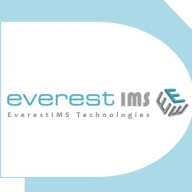

Infraon IMS and Sumo Logic Observability compete in IT management and monitoring. Sumo Logic Observability appears to have an edge with its advanced features, albeit at a higher cost, while Infraon IMS is preferred for pricing and customer support.
Features:Infraon IMS provides robust network management, automation capabilities, and powerful analytics. Sumo Logic Observability offers real-time monitoring, extensive third-party integrations, and advanced data analytics, enhancing data visibility and insights.
Room for Improvement:Infraon IMS could enhance its initial learning curve, expand integration options, and improve dashboard customization. Sumo Logic Observability may refine its ease of use, provide more straightforward query instructions, and broaden its deployment support to streamline adaptation.
Ease of Deployment and Customer Service:Infraon IMS is straightforward to install with responsive customer service that promotes quicker adoption. Sumo Logic Observability, though complex due to its advanced feature set, provides thorough documentation for guidance, requiring more technical depth for deployment.
Pricing and ROI:Infraon IMS offers competitive setup costs, facilitating a faster return on investment with its cost-effective pricing. Sumo Logic Observability, despite a potential higher initial expense, yields solid ROI via enhanced data insights and long-term benefits for organizations seeking advanced functionality.
| Product | Market Share (%) |
|---|---|
| Sumo Logic Observability | 0.3% |
| Infraon IMS | 0.4% |
| Other | 99.3% |


| Company Size | Count |
|---|---|
| Small Business | 3 |
| Midsize Enterprise | 2 |
| Large Enterprise | 3 |
Infraon IMS offers network monitoring with real-time dashboards, customizable GUIs, and integrated tools, supporting device management and workflow automation efficiently.
Infraon IMS delivers stable performance with features tailored for easy customization and detailed network management. Users benefit from real-time monitoring through role-based dashboards and integrated ticketing tools. However, improvements in reporting, GUI usability, and AI integration are needed. Challenges include monitoring non-IPBS devices and improving connectivity visibility. Users require seamless Infraon Desk integration, ease of device addition, and enhanced topology views.
What are the key features of Infraon IMS?In industries like IT infrastructure and data center management, Infraon IMS is utilized for network monitoring and managing key components such as leased lines and firewalls. Its capabilities aid diverse geographical locations in overseeing data centers, offering centralized monitoring and access to critical infrastructure.
Sumo Logic Observability offers advanced monitoring solutions with features like integrated dashboards and querying capabilities, though presents a learning curve compared to alternatives. Designed for efficient log aggregation and analysis, it provides near-real-time updates facilitating improved incident resolution.
Sumo Logic Observability stands out with its ability to unify teams through a single platform, offering features that include customizable dashboards and valuable apps. It provides powerful log tracing and centralized management, designed for organizations focused on log aggregation, analysis, and expanding SIEM capabilities. While it has a steeper learning curve compared to some competitors, it excels in tailored integrations that enhance log searches. Users find themselves able to monitor, automate, and centralize log repositories for effective debugging. Despite its strengths, improvements in data enrichment and documentation organization are needed as current query functions can be slow, impacting efficiency. Users have also mentioned needing pre-built dashboards and better tab management for enhanced functionality. Cost management remains a notable consideration for users evaluating Sumo Logic Observability.
What features make Sumo Logic Observability effective?Sumo Logic Observability is implemented across industries predominantly for managing and analyzing extensive data sets, offering capabilities critical for SIEM activities and security examinations. By facilitating quick data visualization and transaction tracking, organizations in sectors such as finance, healthcare, and technology benefit from its robust framework to support infrastructure logging and large-scale data management, contributing to effective monitoring and system operations.
We monitor all Cloud Monitoring Software reviews to prevent fraudulent reviews and keep review quality high. We do not post reviews by company employees or direct competitors. We validate each review for authenticity via cross-reference with LinkedIn, and personal follow-up with the reviewer when necessary.